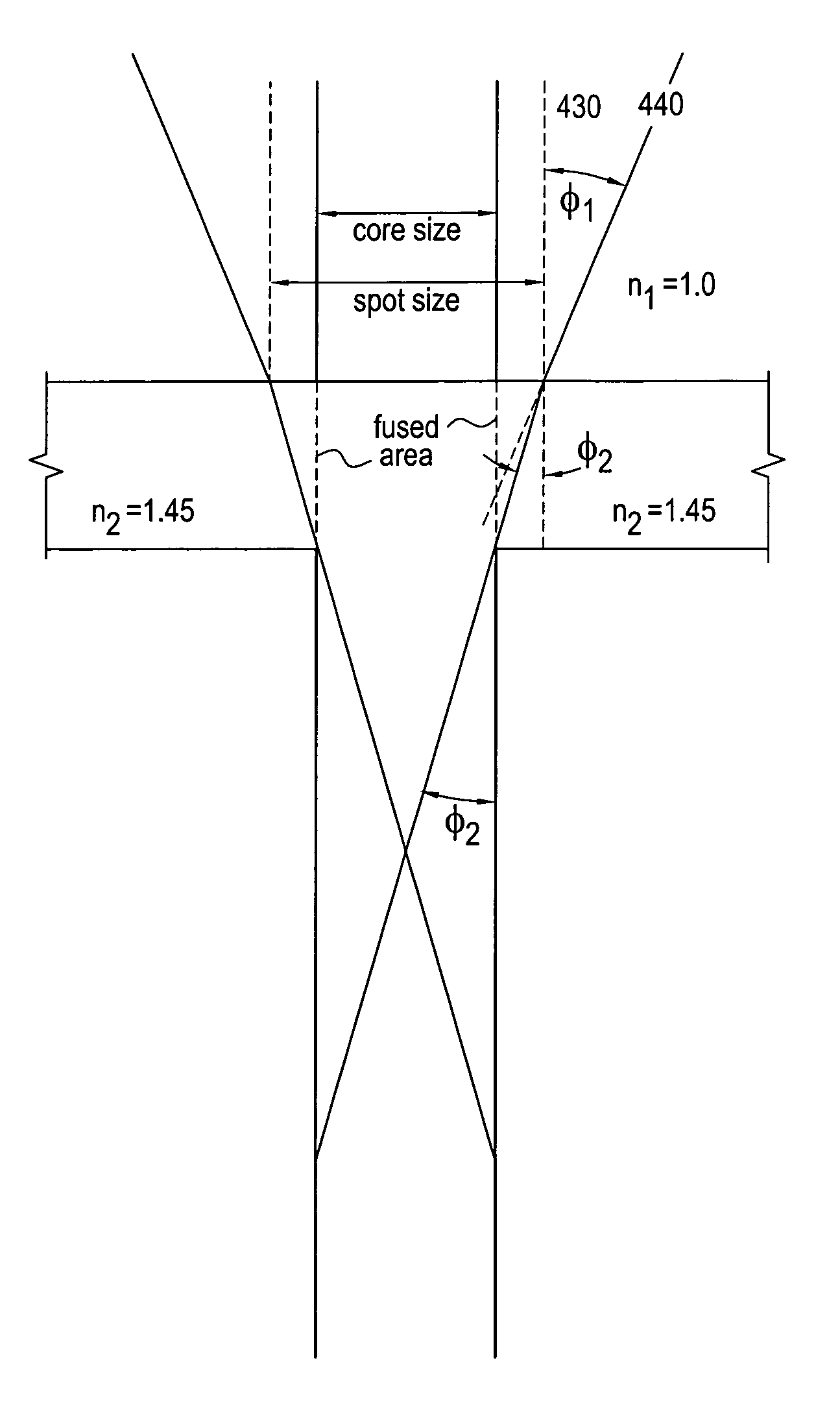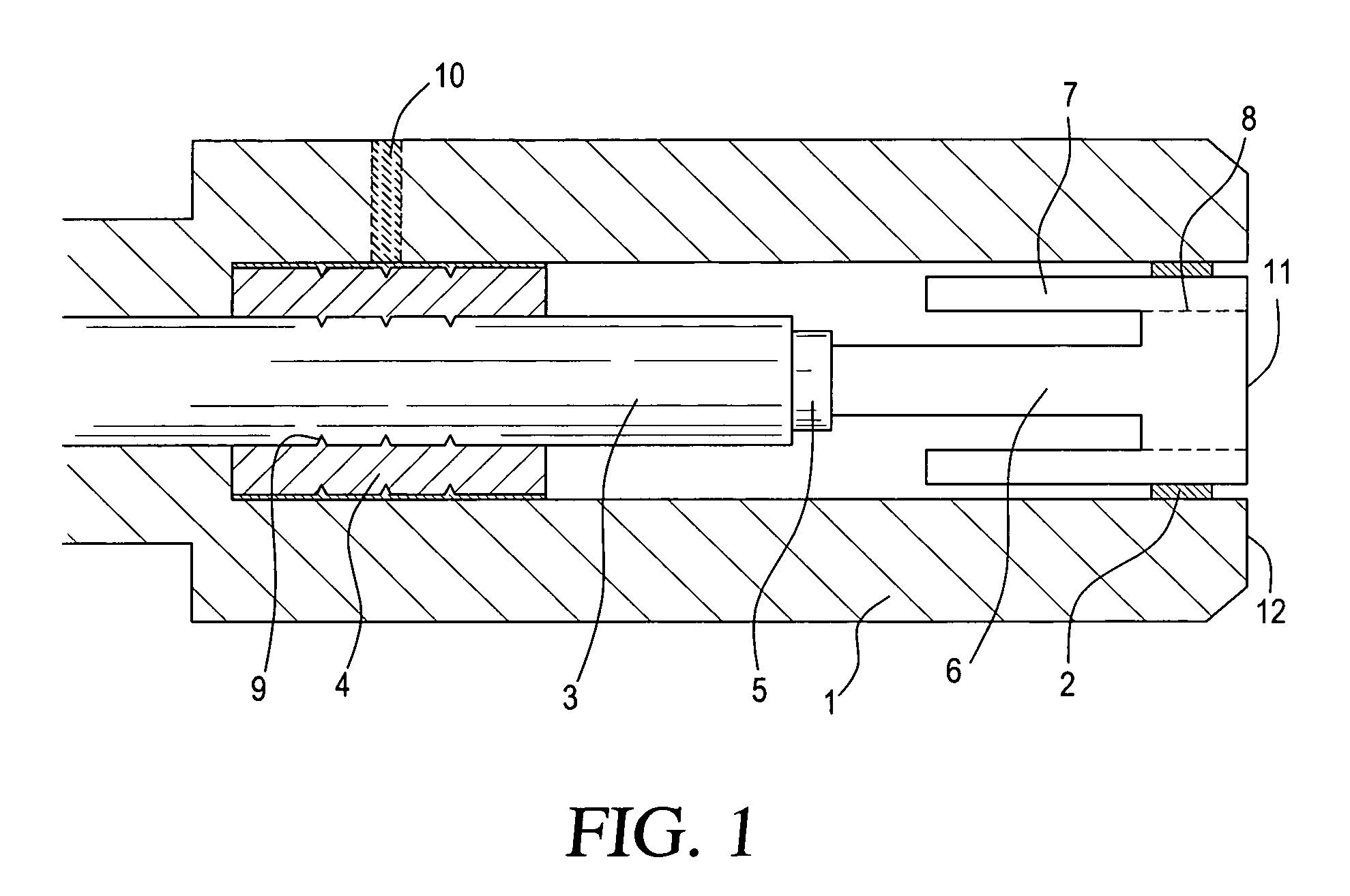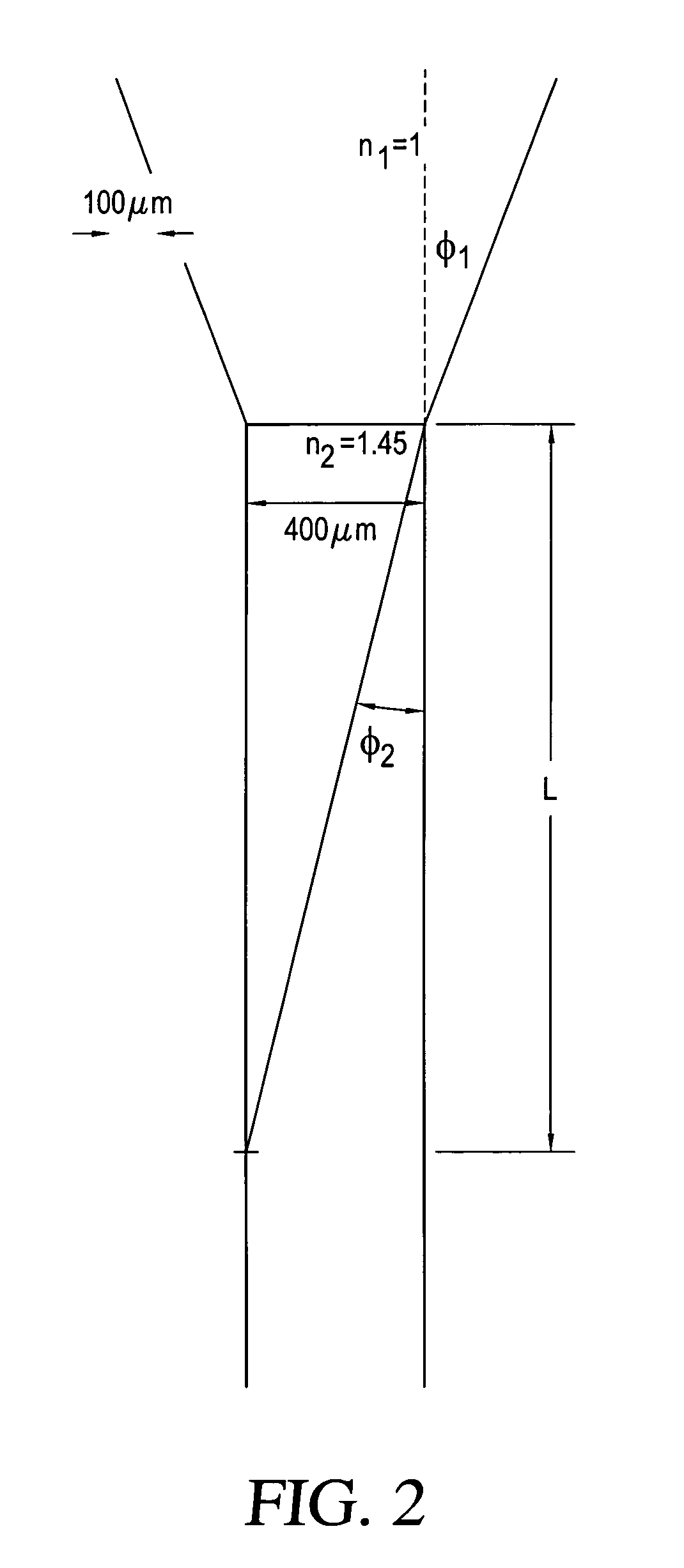Fiber optic connector for coupling laser energy into small core fibers, and termination method therefor
a fiber optic connector and laser energy technology, applied in glass making apparatus, instruments, manufacturing tools, etc., can solve the problems of reducing the efficiency of the delivery system, difficult to couple light to the fiber, and limiting the amount of energy that can be delivered
- Summary
- Abstract
- Description
- Claims
- Application Information
AI Technical Summary
Benefits of technology
Problems solved by technology
Method used
Image
Examples
Embodiment Construction
[0029]FIG. 1 illustrates a preferred embodiment of the invention including an optical fiber having a fiber core 6, a cladding layer 5, and a fiber buffer 3. The optical fiber may be made of any conventional fiber materials, including but not limited to glass or silica core materials, and glass, silica, or polymer cladding and buffer materials. A transparent ferrule 7 is fused or welded to the termination or coupling end of the fiber core in the region indicated by dashed line 8. The transparent ferrule may be made, by way of example and not limitation, of quartz or glass.
[0030]A crimp ferrule 4 is crimped onto the fiber buffer 6 at crimp region 9, but is not adhered or in contact with to the transparent ferrule 7. The crimp ferrule 4 may be used to hold the fiber during stripping of the cladding layer and welding or fusing of the transparent ferrule 7 to the fiber core 6, and as is conventional may be made of a malleable material such as metal. After completion of welding or fusing,...
PUM
| Property | Measurement | Unit |
|---|---|---|
| diameter | aaaaa | aaaaa |
| diameter | aaaaa | aaaaa |
| length | aaaaa | aaaaa |
Abstract
Description
Claims
Application Information
 Login to View More
Login to View More - R&D
- Intellectual Property
- Life Sciences
- Materials
- Tech Scout
- Unparalleled Data Quality
- Higher Quality Content
- 60% Fewer Hallucinations
Browse by: Latest US Patents, China's latest patents, Technical Efficacy Thesaurus, Application Domain, Technology Topic, Popular Technical Reports.
© 2025 PatSnap. All rights reserved.Legal|Privacy policy|Modern Slavery Act Transparency Statement|Sitemap|About US| Contact US: help@patsnap.com



